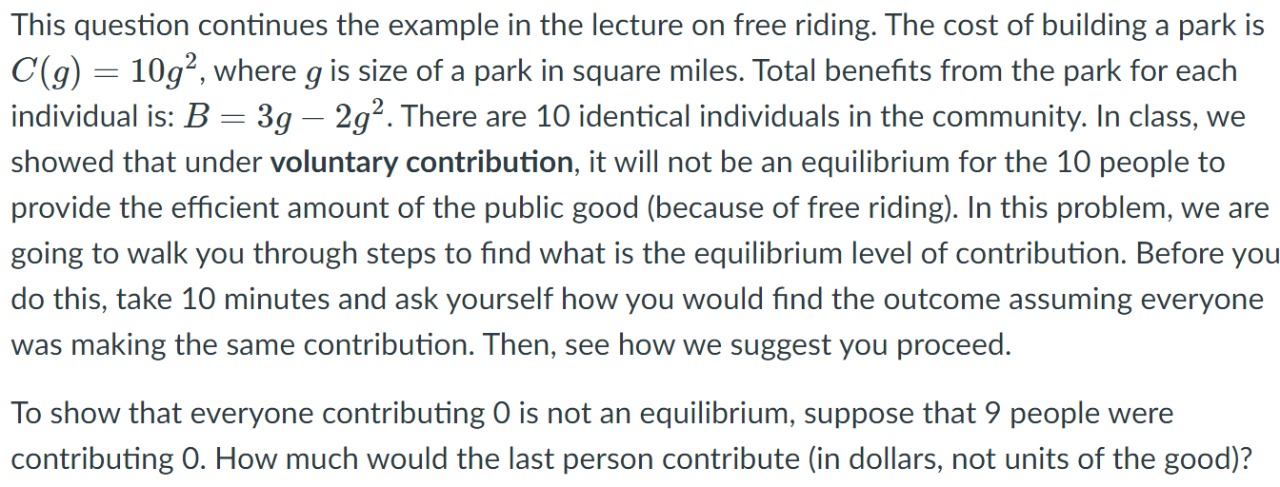

Answer the following.
1. Consider the problem we worked through in class. The purpose of this homework question is for you to be able to replicate the results. We are assuming that Pm = $500, C = .20, and L= .10 State of the World Probability Uninsured Demand Insured Demand 1 x1 = .30 ml = 3 m2 =4 2 12 = .10 m3 = 8 m4 = 9 73 =.60 m5 =0 m6 = 0 " PM C . PM M a. Calculate the expected benefits, E(B), the insurance company will have to pay. b. Calculate the premium, R, charged by the insurance company, ignoring any tax subsidy. c. Calculate the expected welfare loss, E(WL), from buying this policy. (HINT: the expected welfare loss is the sum of the areas of the two triangles times their probabilities.) d. If the risk premium associated with this policy is $220, how much would the consumer be willing to pay for the insurance? e. Is there a net welfare gain associated with buying this policy? If so, what is it?This question continues the example in the lecture on free riding. The cost of building a park is C(g) = 10g, where g is size of a park in square miles. Total benefits from the park for each individual is: B = 3g - 292. There are 10 identical individuals in the community. In class, we showed that under voluntary contribution, it will not be an equilibrium for the 10 people to provide the efficient amount of the public good (because of free riding). In this problem, we are going to walk you through steps to find what is the equilibrium level of contribution. Before you do this, take 10 minutes and ask yourself how you would find the outcome assuming everyone was making the same contribution. Then, see how we suggest you proceed. To show that everyone contributing O is not an equilibrium, suppose that 9 people were contributing 0. How much would the last person contribute (in dollars, not units of the good)?Question 4: Pricing Strategies (5 points) Elvis World is an amusement park that attracts 1,000 visitors each day. Every visitor has an identical individual demand function for rides at Elvis World: qP(P) = 50 -50P where P is the price of a ride. Assume that Elvis World has fixed costs of $10, 000 per day and the marginal cost of providing a ride to an additional visitor is essentially zero. By how much would Elvis World increase its profits per day if it switched from charging the profit-maximizing single price per ride (with no entrance fee) to instead charging the profit-maximizing two-part tariff (consisting of an entrance fee to the park and a separate price per ride)











